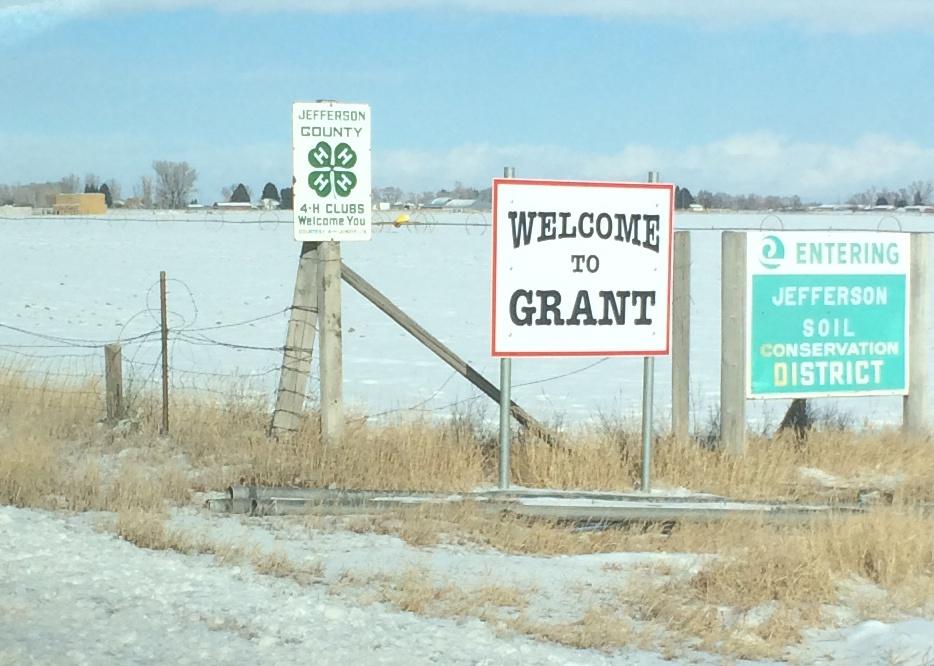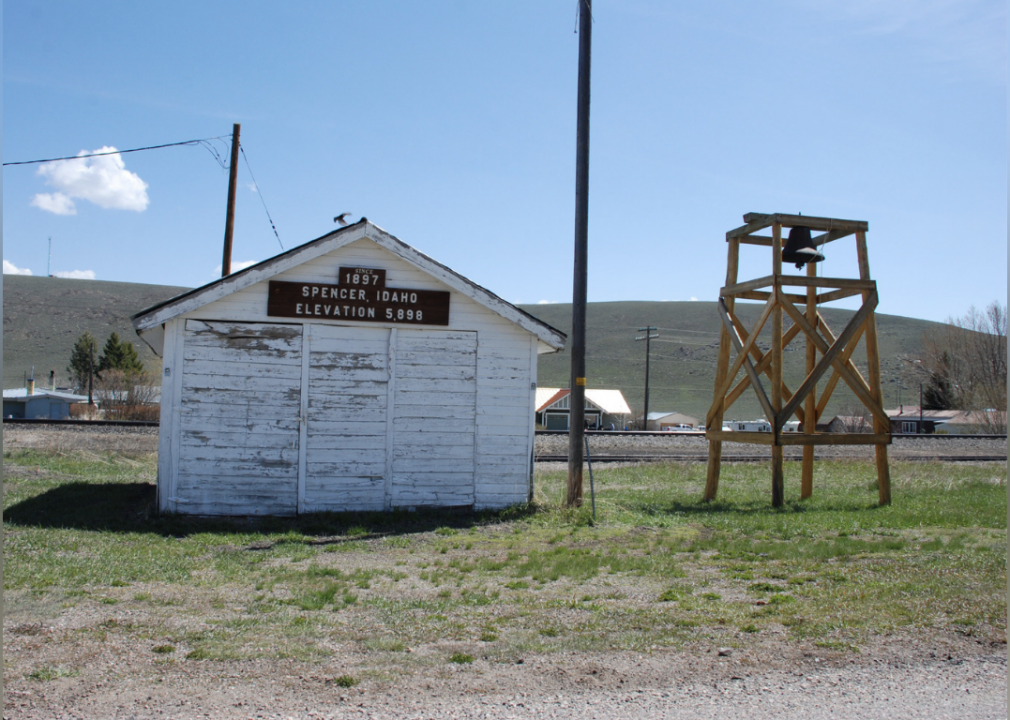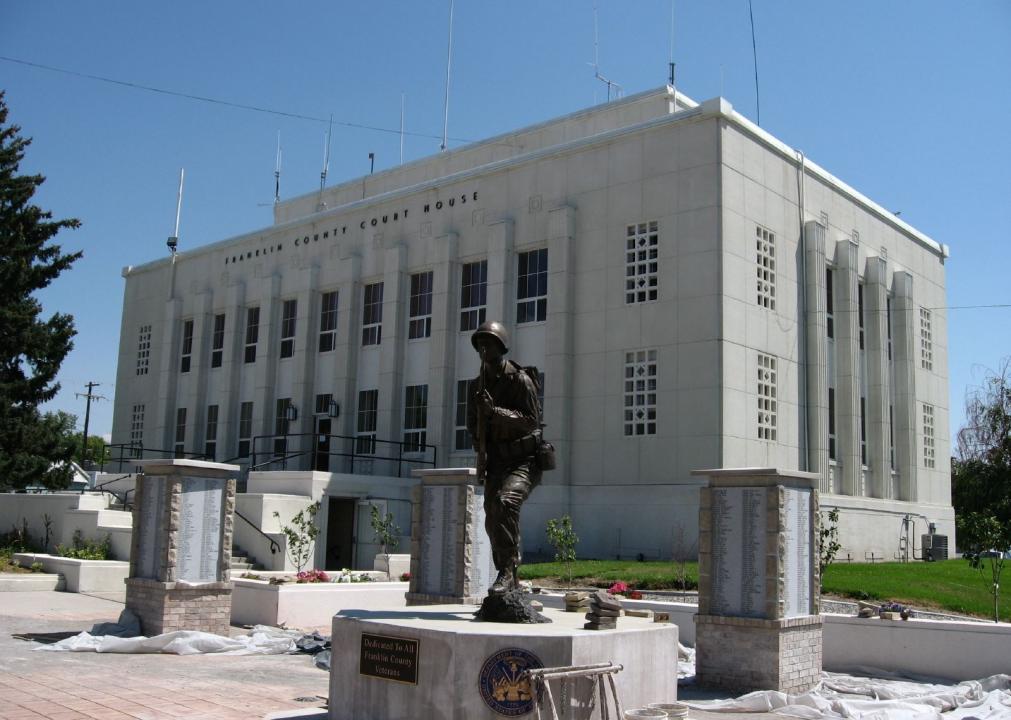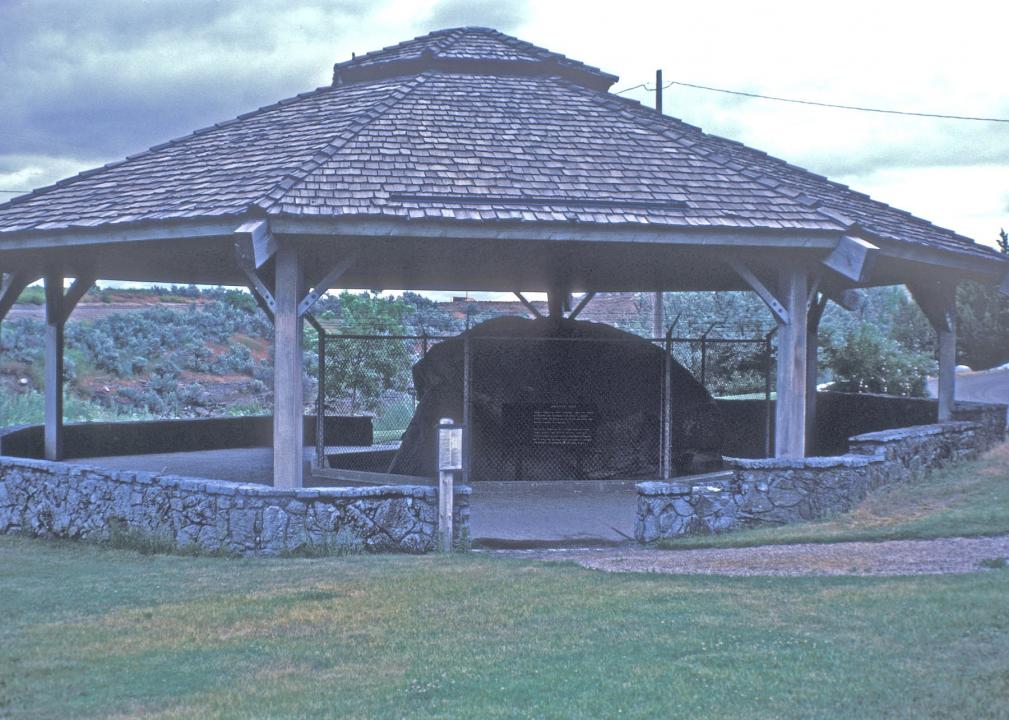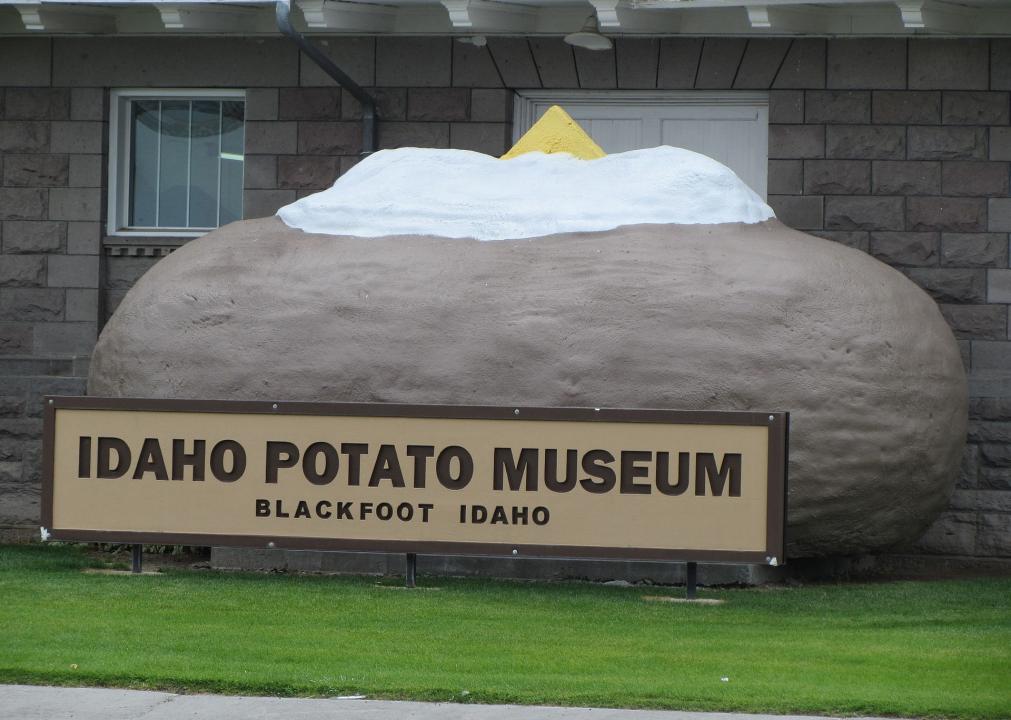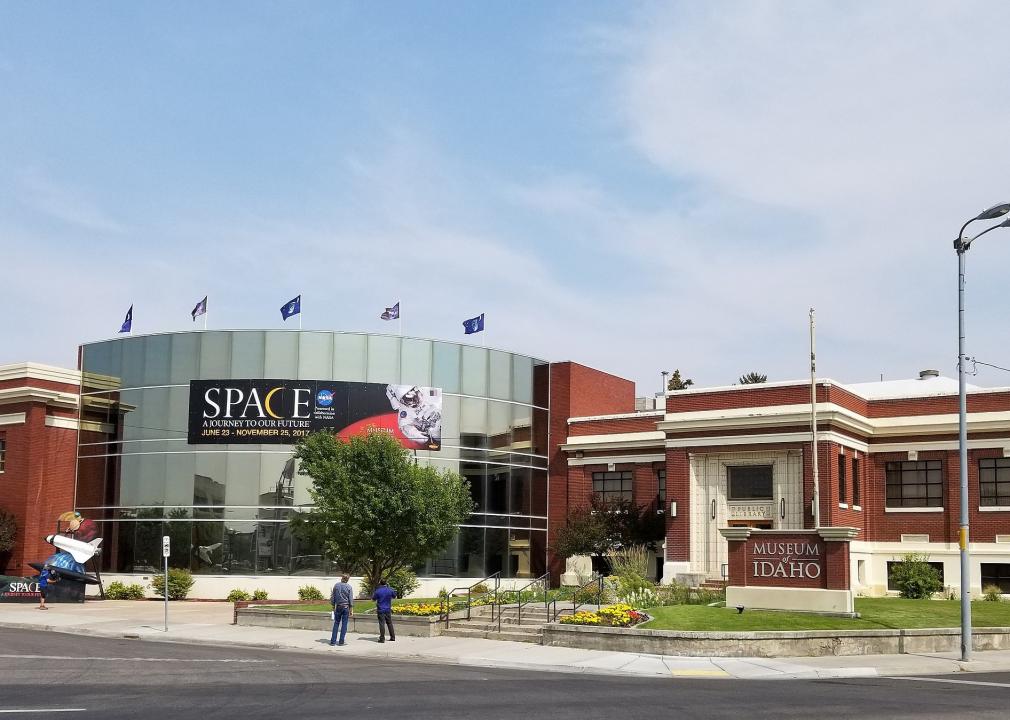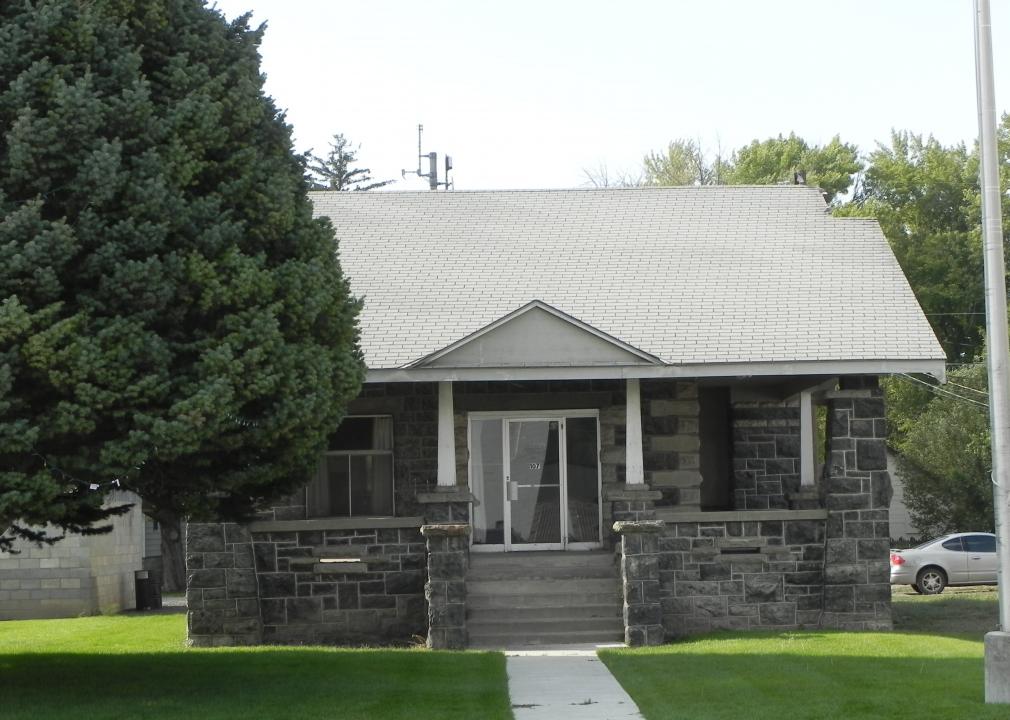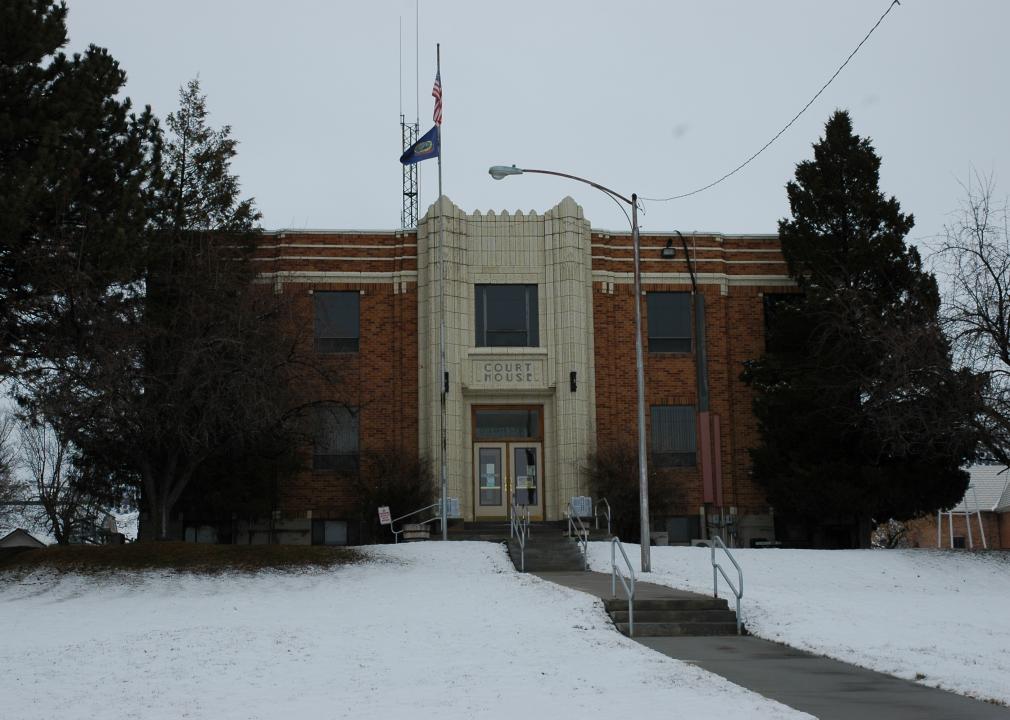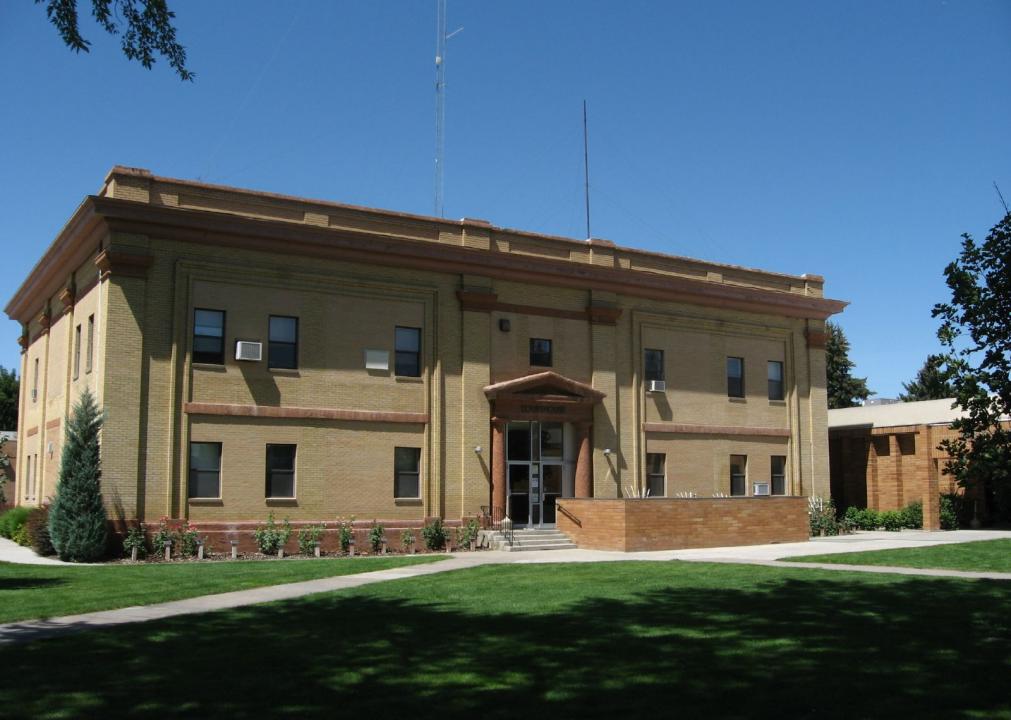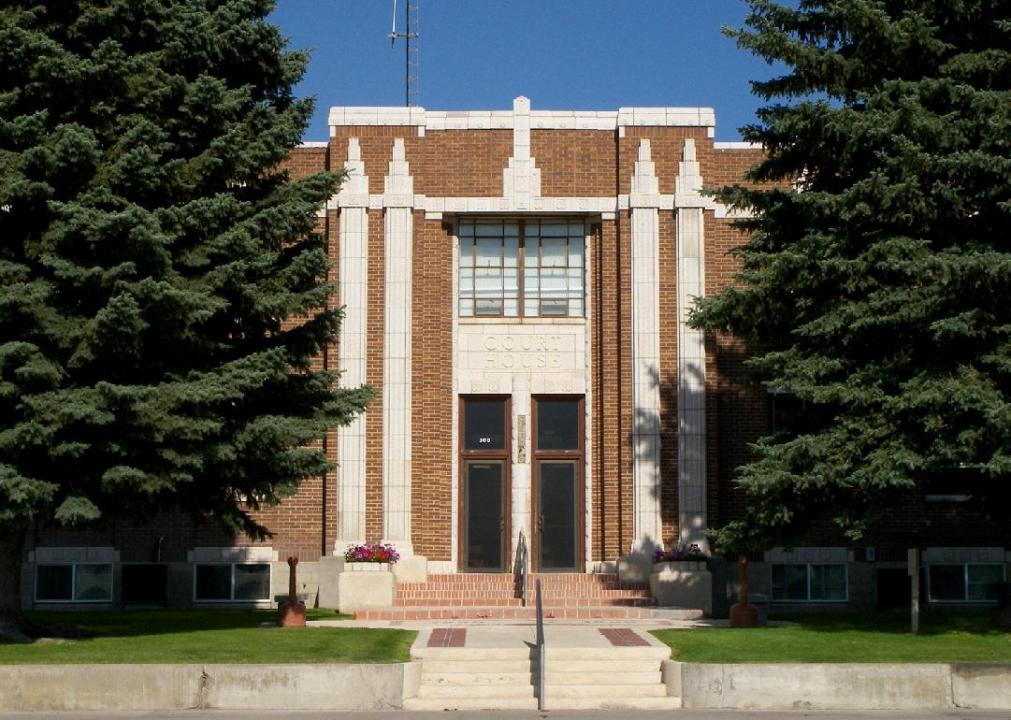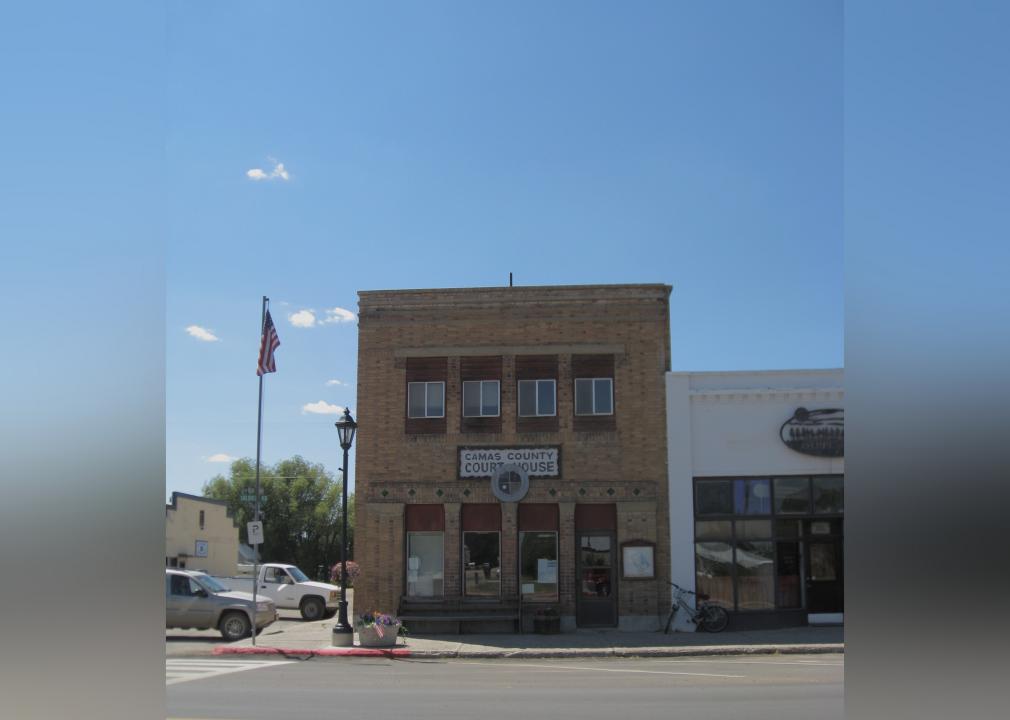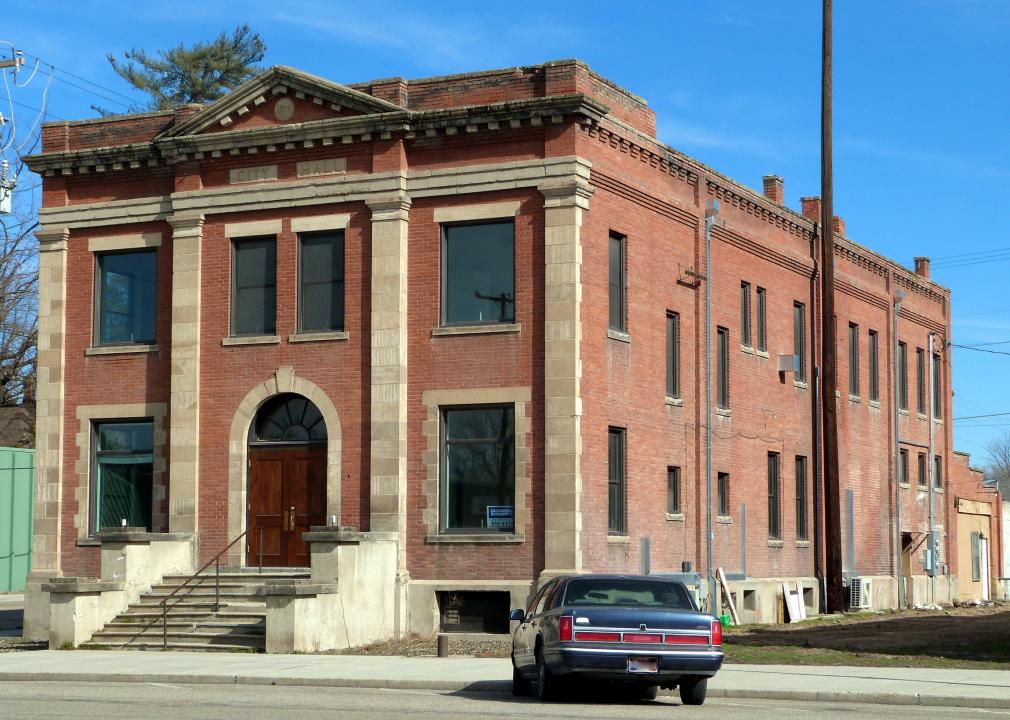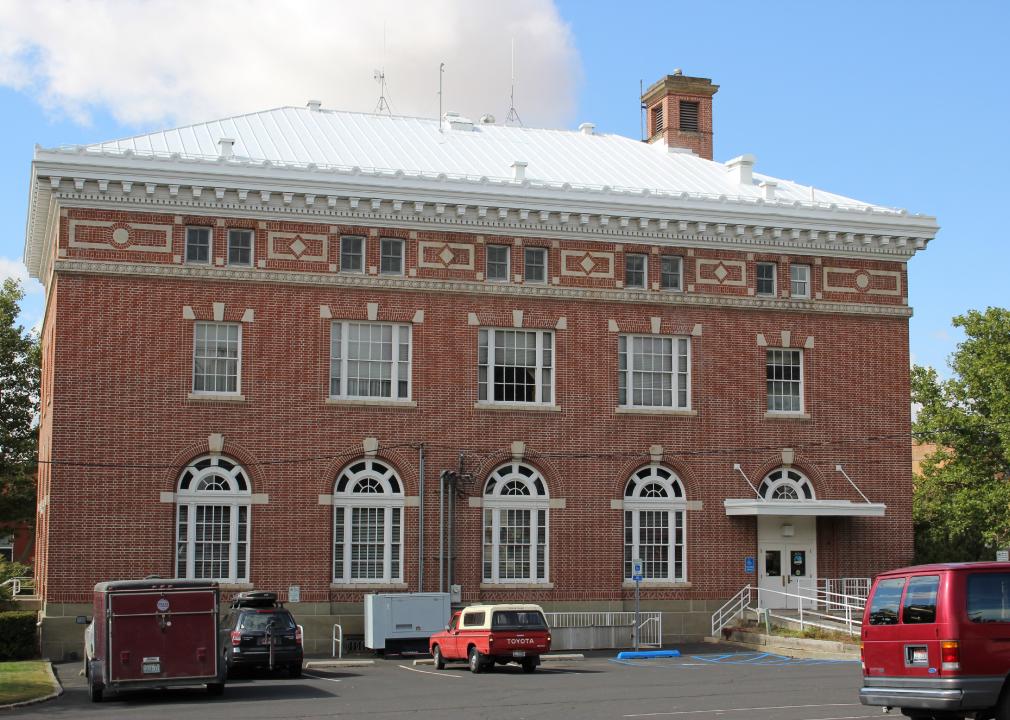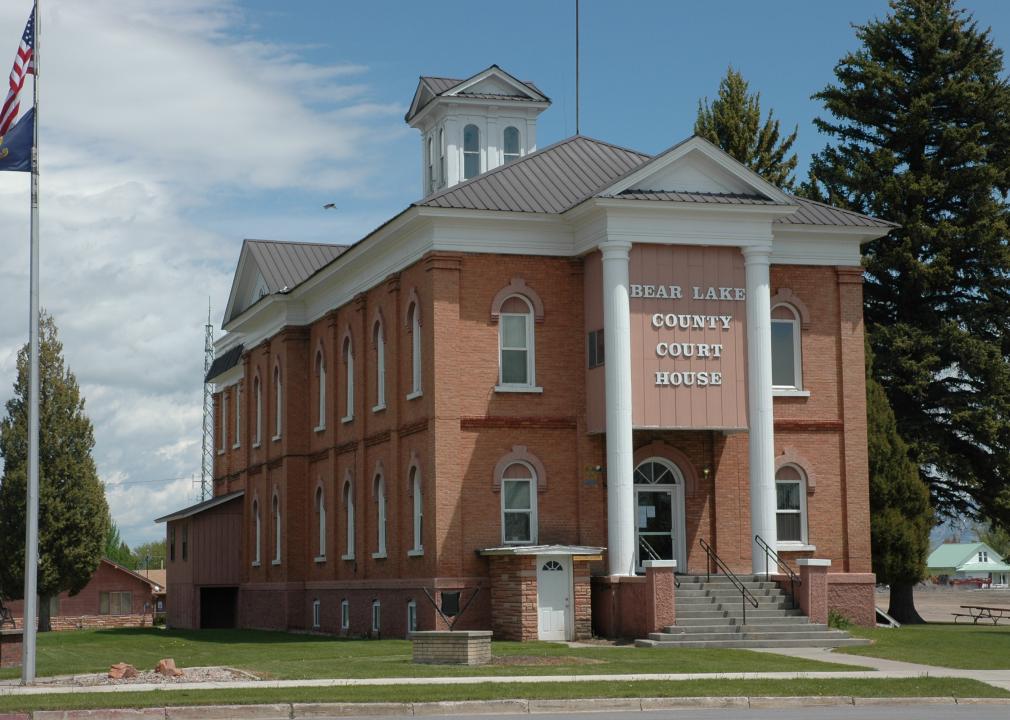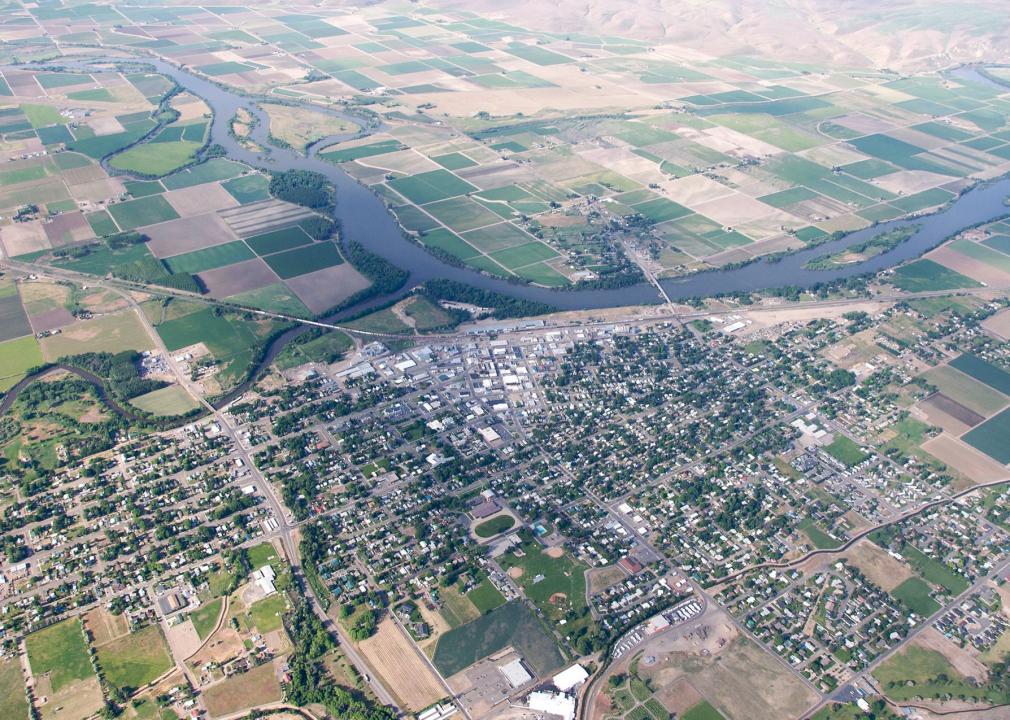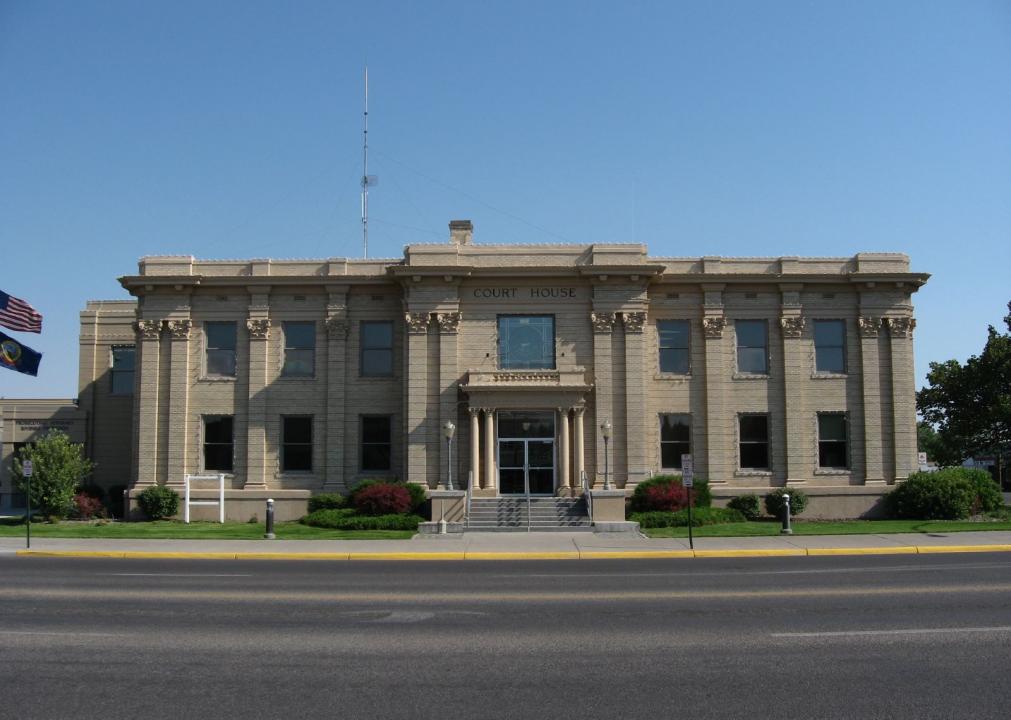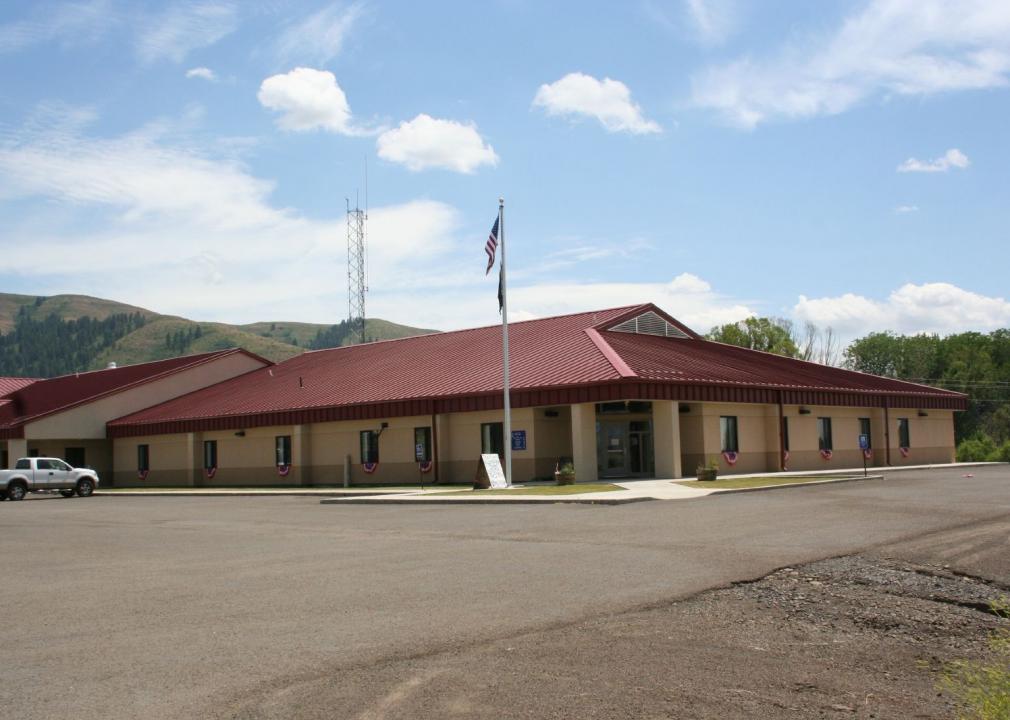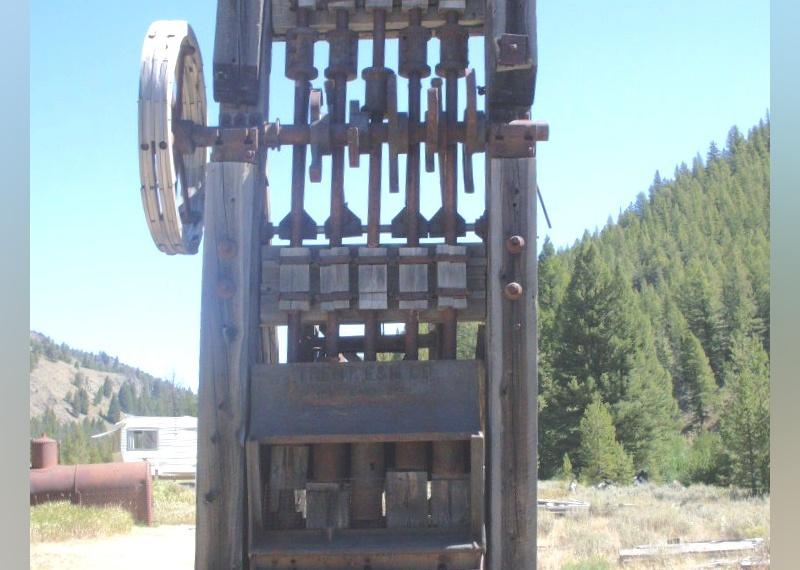Counties with the highest rate of food insecurity in Idaho

jfergusonphotos // Shutterstock
Counties with the highest rate of food insecurity in Idaho
Every county in the United States is home to people experiencing food insecurity, defined by the nonprofit Feeding America as “a lack of consistent access to enough food for every person in a household to live an active, healthy life.”
The USDA estimates that 89.5% of U.S. households were food secure throughout 2019—that’s 116.0 million people. The COVID-19 pandemic put further strain on households already experiencing food hardship, with Feeding America estimating that 42 million people, or 1 in 8 Americans, may experience food insecurity in 2021. This is a slight improvement from 2020 numbers but still represents an enormous burden for millions of children and adults.
Stacker compiled a list of counties in Idaho with the highest rate of food insecurity using data from Feeding America. Counties are ranked by highest percent of population with food insecurity as of 2019.
![]()
Lowjumpingfrog // Wikimedia Commons
#44. Teton County
– Food insecurity rate: 5.0% (570 total)
— 54.1% lower than national average
– Child food insecurity rate: 3.3% (100 total)
— 77.4% lower than national average
– Annual food budget shortfall: $311,000
— Cost per meal: $3.19
Bathlander // Wikimedia Commons
#43. Jefferson County
– Food insecurity rate: 6.6% (1,890 total)
— 39.4% lower than national average
– Child food insecurity rate: 7.7% (740 total)
— 47.3% lower than national average
– Annual food budget shortfall: $1,034,000
— Cost per meal: $3.20
Kristen Taylor // Wikimedia Commons
#42. Clark County
– Food insecurity rate: 6.9% (60 total)
— 36.7% lower than national average
– Child food insecurity rate: 11.5% (30 total)
— 21.2% lower than national average
– Annual food budget shortfall: $32,000
— Cost per meal: $3.16
Charles Knowles // Shutterstock
#41. Ada County
– Food insecurity rate: 8.8% (40,370 total)
— 19.3% lower than national average
– Child food insecurity rate: 8.7% (9,570 total)
— 40.4% lower than national average
– Annual food budget shortfall: $24,382,000
— Cost per meal: $3.53
Greg L. Wright // Wikimedia Commons
#40. Blaine County
– Food insecurity rate: 8.9% (1,980 total)
— 18.3% lower than national average
– Child food insecurity rate: 11.9% (590 total)
— 18.5% lower than national average
– Annual food budget shortfall: $1,673,000
— Cost per meal: $4.94
Dschwen // Wikimedia Commons
#39. Caribou County
– Food insecurity rate: 9.0% (630 total)
— 17.4% lower than national average
– Child food insecurity rate: 10.8% (220 total)
— 26.0% lower than national average
– Annual food budget shortfall: $331,000
— Cost per meal: $3.07
Ken L. // Wikimedia Commons
#38. Franklin County
– Food insecurity rate: 9.1% (1,230 total)
— 16.5% lower than national average
– Child food insecurity rate: 11.2% (490 total)
— 23.3% lower than national average
– Annual food budget shortfall: $652,000
— Cost per meal: $3.10
Karthikc123 // Wikimedia Commons
#37. Valley County
– Food insecurity rate: 9.3% (990 total)
— 14.7% lower than national average
– Child food insecurity rate: 10.6% (190 total)
— 27.4% lower than national average
– Annual food budget shortfall: $568,000
— Cost per meal: $3.35
JERRYE & ROY KLOTZ MD // Wikimedia Commons
#36. Power County
– Food insecurity rate: 9.4% (720 total)
— 13.8% lower than national average
– Child food insecurity rate: 12.0% (280 total)
— 17.8% lower than national average
– Annual food budget shortfall: $379,000
— Cost per meal: $3.08
KRRK // Wikimedia Commons
#35. Bingham County
– Food insecurity rate: 9.4% (4,310 total)
— 13.8% lower than national average
– Child food insecurity rate: 11.3% (1,610 total)
— 22.6% lower than national average
– Annual food budget shortfall: $2,171,000
— Cost per meal: $2.95
Jcarr29 // Wikimedia Commons
#34. Bonneville County
– Food insecurity rate: 9.5% (10,880 total)
— 12.8% lower than national average
– Child food insecurity rate: 10.2% (3,620 total)
— 30.1% lower than national average
– Annual food budget shortfall: $5,661,000
— Cost per meal: $3.04
Aualliso // Wikimedia Commons
#33. Fremont County
– Food insecurity rate: 9.6% (1,250 total)
— 11.9% lower than national average
– Child food insecurity rate: 11.3% (390 total)
— 22.6% lower than national average
– Annual food budget shortfall: $702,000
— Cost per meal: $3.28
Tom Young // Wikimedia Commons
#32. Lincoln County
– Food insecurity rate: 9.7% (520 total)
— 11.0% lower than national average
– Child food insecurity rate: 12.8% (200 total)
— 12.3% lower than national average
– Annual food budget shortfall: $276,000
— Cost per meal: $3.11
wilson44691 // Wikimedia Commons
#31. Cassia County
– Food insecurity rate: 9.7% (2,300 total)
— 11.0% lower than national average
– Child food insecurity rate: 11.5% (870 total)
— 21.2% lower than national average
– Annual food budget shortfall: $1,293,000
— Cost per meal: $3.29
PdxCobra // Wikimedia Commons
#30. Boise County
– Food insecurity rate: 10.1% (740 total)
— 7.3% lower than national average
– Child food insecurity rate: 12.6% (160 total)
— 13.7% lower than national average
– Annual food budget shortfall: $424,000
— Cost per meal: $3.35
Tricia Simpson // Wikimedia Commons
#29. Oneida County
– Food insecurity rate: 10.2% (450 total)
— 6.4% lower than national average
– Child food insecurity rate: 11.3% (150 total)
— 22.6% lower than national average
– Annual food budget shortfall: $237,000
— Cost per meal: $3.08
Tamanoeconomico // Wikimedia Commons
#28. Canyon County
– Food insecurity rate: 10.2% (22,100 total)
— 6.4% lower than national average
– Child food insecurity rate: 11.5% (7,230 total)
— 21.2% lower than national average
– Annual food budget shortfall: $11,428,000
— Cost per meal: $3.02
Ken L. // Wikimedia Commons
#27. Minidoka County
– Food insecurity rate: 10.3% (2,130 total)
— 5.5% lower than national average
– Child food insecurity rate: 12.7% (750 total)
— 13.0% lower than national average
– Annual food budget shortfall: $1,048,000
— Cost per meal: $2.88
NPS photo // Wikimedia Commons
#26. Gooding County
– Food insecurity rate: 10.4% (1,580 total)
— 4.6% lower than national average
– Child food insecurity rate: 12.4% (520 total)
— 15.1% lower than national average
– Annual food budget shortfall: $835,000
— Cost per meal: $3.09
Larry D. Moore // Wikimedia Commons
#25. Jerome County
– Food insecurity rate: 10.7% (2,530 total)
— 1.8% lower than national average
– Child food insecurity rate: 13.7% (1,000 total)
— 6.2% lower than national average
– Annual food budget shortfall: $1,252,000
— Cost per meal: $2.89
Karthikc123 // Wikimedia Commons
#24. Twin Falls County
– Food insecurity rate: 10.8% (9,190 total)
— 0.9% lower than national average
– Child food insecurity rate: 12.2% (2,880 total)
— 16.4% lower than national average
– Annual food budget shortfall: $4,842,000
— Cost per meal: $3.08
Antony-22 // Wikimedia Commons
#23. Kootenai County
– Food insecurity rate: 10.8% (16,960 total)
— 0.9% lower than national average
– Child food insecurity rate: 13.6% (4,940 total)
— 6.8% lower than national average
– Annual food budget shortfall: $9,600,000
— Cost per meal: $3.31
Cornellrockey04 // Wikimedia Commons
#22. Camas County
– Food insecurity rate: 11.1% (120 total)
— 1.8% higher than national average
– Child food insecurity rate: 15.5% (40 total)
— 6.2% higher than national average
– Annual food budget shortfall: $73,000
— Cost per meal: $3.58
Ian Poellet // Wikimedia Commons
#21. Payette County
– Food insecurity rate: 11.2% (2,600 total)
— 2.8% higher than national average
– Child food insecurity rate: 13.0% (800 total)
— 11.0% lower than national average
– Annual food budget shortfall: $1,746,000
— Cost per meal: $3.93
Dsdugan // Wikimedia Commons
#20. Nez Perce County
– Food insecurity rate: 11.3% (4,540 total)
— 3.7% higher than national average
– Child food insecurity rate: 13.4% (1,140 total)
— 8.2% lower than national average
– Annual food budget shortfall: $2,312,000
— Cost per meal: $2.98
Apstrinka // Wikimedia Commons
#19. Latah County
– Food insecurity rate: 11.4% (4,520 total)
— 4.6% higher than national average
– Child food insecurity rate: 11.0% (810 total)
— 24.7% lower than national average
– Annual food budget shortfall: $2,415,000
— Cost per meal: $3.13
Tricia Simpson // Wikimedia Commons
#18. Bear Lake County
– Food insecurity rate: 11.8% (710 total)
— 8.3% higher than national average
– Child food insecurity rate: 15.4% (240 total)
— 5.5% higher than national average
– Annual food budget shortfall: $373,000
— Cost per meal: $3.08
United States Department of Agriculture // Wikimedia Commons
#17. Owyhee County
– Food insecurity rate: 11.8% (1,360 total)
— 8.3% higher than national average
– Child food insecurity rate: 15.3% (460 total)
— 4.8% higher than national average
– Annual food budget shortfall: $771,000
— Cost per meal: $3.32
Squelle // Wikimedia Commons
#16. Butte County
– Food insecurity rate: 12.1% (310 total)
— 11.0% higher than national average
– Child food insecurity rate: 14.0% (80 total)
— 4.1% lower than national average
– Annual food budget shortfall: $163,000
— Cost per meal: $3.08

Michlaovic // Wikimedia
#15. Bannock County
– Food insecurity rate: 12.1% (10,390 total)
— 11.0% higher than national average
– Child food insecurity rate: 13.6% (3,070 total)
— 6.8% lower than national average
– Annual food budget shortfall: $5,542,000
— Cost per meal: $3.12
John Stanton // Wikimedia Commons
#14. Lemhi County
– Food insecurity rate: 12.2% (960 total)
— 11.9% higher than national average
– Child food insecurity rate: 16.0% (240 total)
— 9.6% higher than national average
– Annual food budget shortfall: $584,000
— Cost per meal: $3.56
Larry D. Moore // Wikimedia Commons
#13. Elmore County
– Food insecurity rate: 12.2% (3,270 total)
— 11.9% higher than national average
– Child food insecurity rate: 13.2% (890 total)
— 9.6% lower than national average
– Annual food budget shortfall: $1,806,000
— Cost per meal: $3.23
Sam Beebe // Wikimedia Commons
#12. Washington County
– Food insecurity rate: 12.4% (1,250 total)
— 13.8% higher than national average
– Child food insecurity rate: 16.4% (380 total)
— 12.3% higher than national average
– Annual food budget shortfall: $675,000
— Cost per meal: $3.16
L’Aquatique // Wikimedia Commons
#11. Bonner County
– Food insecurity rate: 12.5% (5,440 total)
— 14.7% higher than national average
– Child food insecurity rate: 15.8% (1,380 total)
— 8.2% higher than national average
– Annual food budget shortfall: $3,078,000
— Cost per meal: $3.31
Ken L. // Wikimedia Commons
#10. Madison County
– Food insecurity rate: 12.6% (4,930 total)
— 15.6% higher than national average
– Child food insecurity rate: 12.4% (1,330 total)
— 15.1% lower than national average
– Annual food budget shortfall: $2,578,000
— Cost per meal: $3.06
Ken L. // Wikimedia Commons
#9. Adams County
– Food insecurity rate: 13.5% (550 total)
— 23.9% higher than national average
– Child food insecurity rate: 19.0% (130 total)
— 30.1% higher than national average
– Annual food budget shortfall: $312,000
— Cost per meal: $3.32
Federal Highway Administration // Wikimedia Commons
#8. Boundary County
– Food insecurity rate: 13.5% (1,590 total)
— 23.9% higher than national average
– Child food insecurity rate: 19.1% (530 total)
— 30.8% higher than national average
– Annual food budget shortfall: $906,000
— Cost per meal: $3.33
John D // Wikimedia Commons
#7. Gem County
– Food insecurity rate: 13.5% (2,340 total)
— 23.9% higher than national average
– Child food insecurity rate: 17.2% (690 total)
— 17.8% higher than national average
– Annual food budget shortfall: $1,337,000
— Cost per meal: $3.34
Forest Service Northern Region from Missoula, MT, USA // Wikimedia Commons
#6. Idaho County
– Food insecurity rate: 13.8% (2,270 total)
— 26.6% higher than national average
– Child food insecurity rate: 16.8% (540 total)
— 15.1% higher than national average
– Annual food budget shortfall: $1,308,000
— Cost per meal: $3.37
Jon Roanhaus // Wikimedia Commons
#5. Clearwater County
– Food insecurity rate: 14.0% (1,220 total)
— 28.4% higher than national average
– Child food insecurity rate: 17.6% (250 total)
— 20.5% higher than national average
– Annual food budget shortfall: $694,000
— Cost per meal: $3.33
Ian Poellet // Wikimedia Commons
#4. Benewah County
– Food insecurity rate: 15.2% (1,390 total)
— 39.4% higher than national average
– Child food insecurity rate: 20.7% (430 total)
— 41.8% higher than national average
– Annual food budget shortfall: $792,000
— Cost per meal: $3.33
tinosa // Wikimedia Commons
#3. Custer County
– Food insecurity rate: 15.5% (640 total)
— 42.2% higher than national average
– Child food insecurity rate: 21.5% (140 total)
— 47.3% higher than national average
– Annual food budget shortfall: $416,000
— Cost per meal: $3.80
rustejunk // Wikimedia Commons
#2. Lewis County
– Food insecurity rate: 16.2% (620 total)
— 48.6% higher than national average
– Child food insecurity rate: 19.8% (170 total)
— 35.6% higher than national average
– Annual food budget shortfall: $316,000
— Cost per meal: $2.98

jfergusonphotos // Shutterstock
#1. Shoshone County
– Food insecurity rate: 17.7% (2,230 total)
— 62.4% higher than national average
– Child food insecurity rate: 25.1% (640 total)
— 71.9% higher than national average
– Annual food budget shortfall: $1,266,000
— Cost per meal: $3.32

